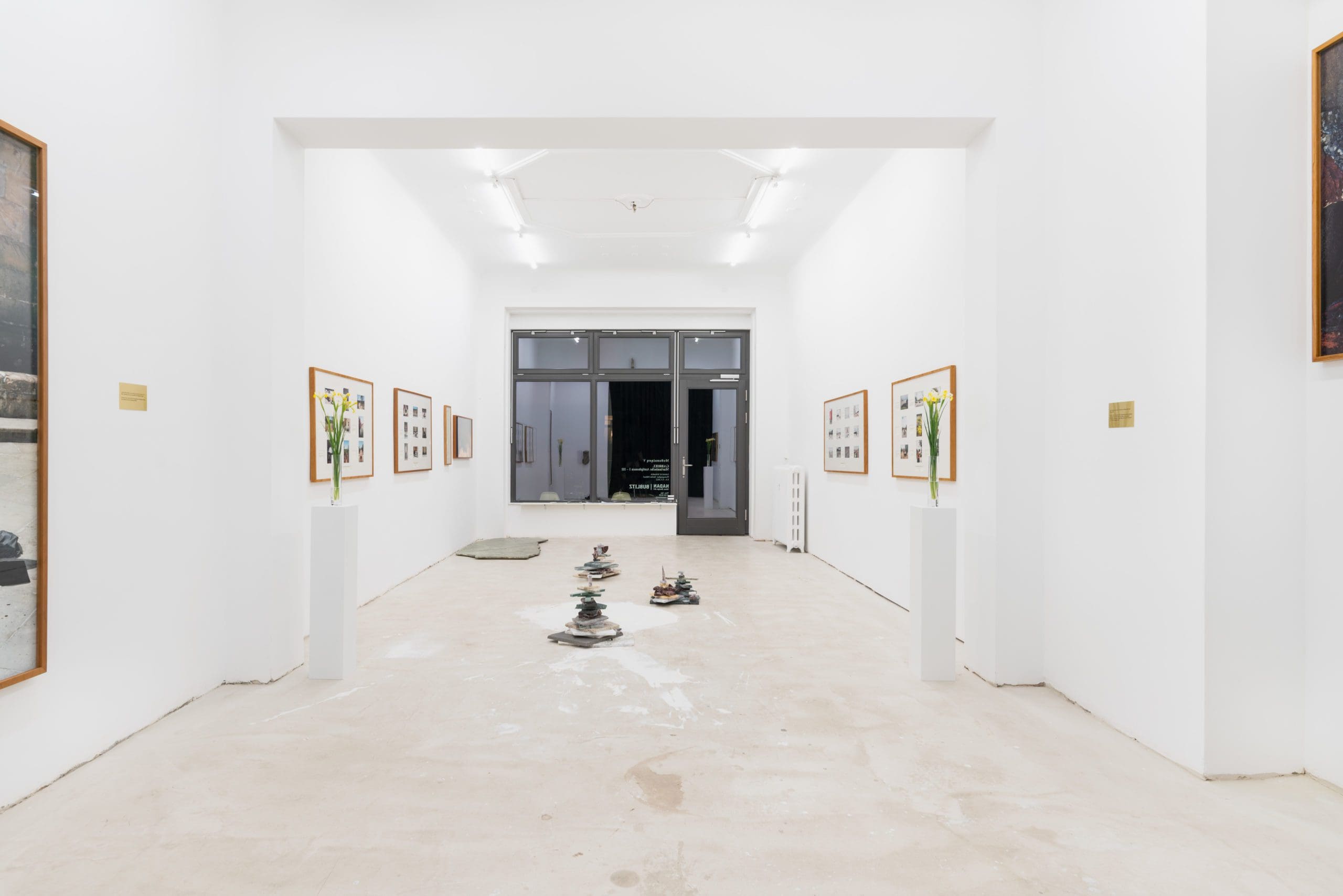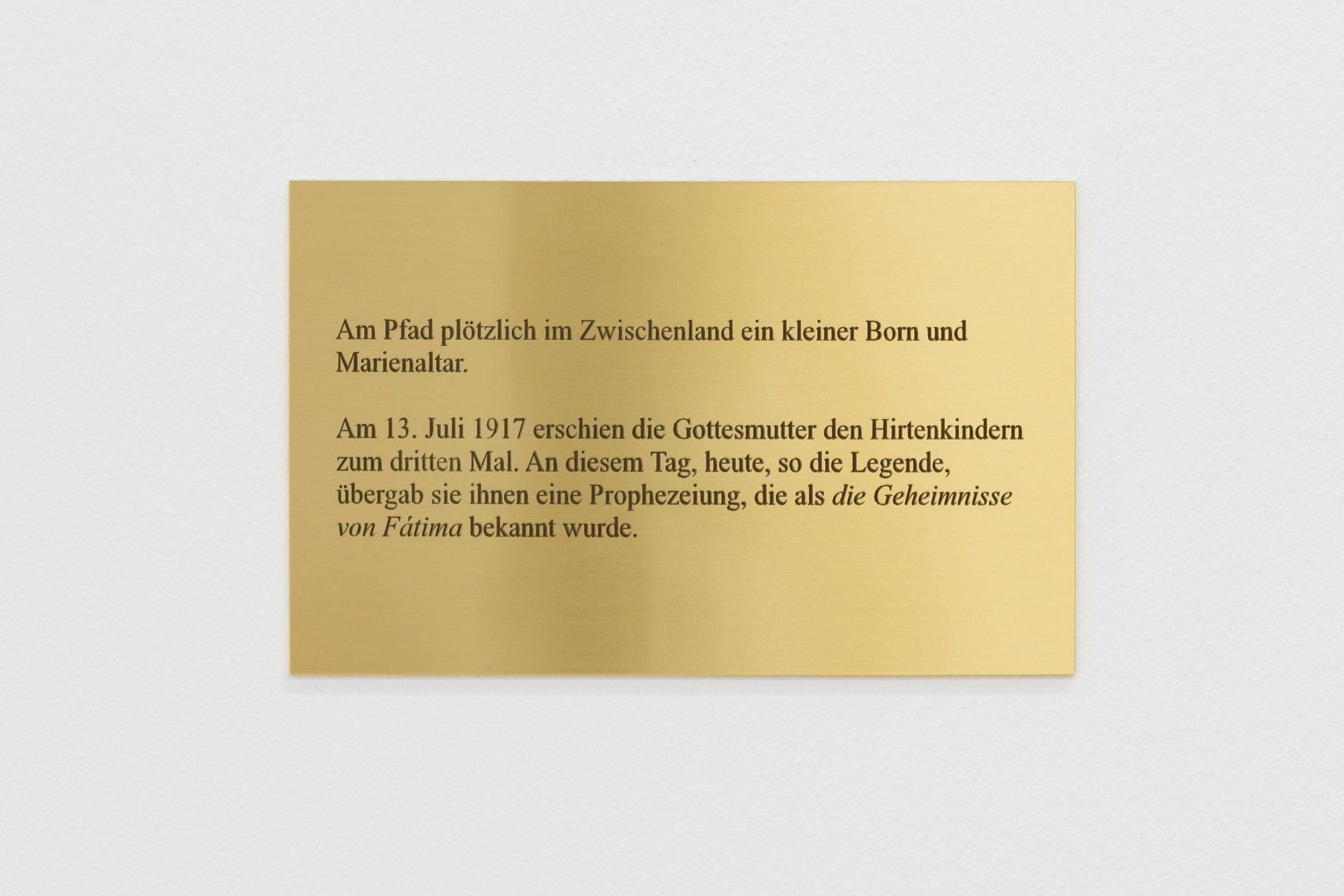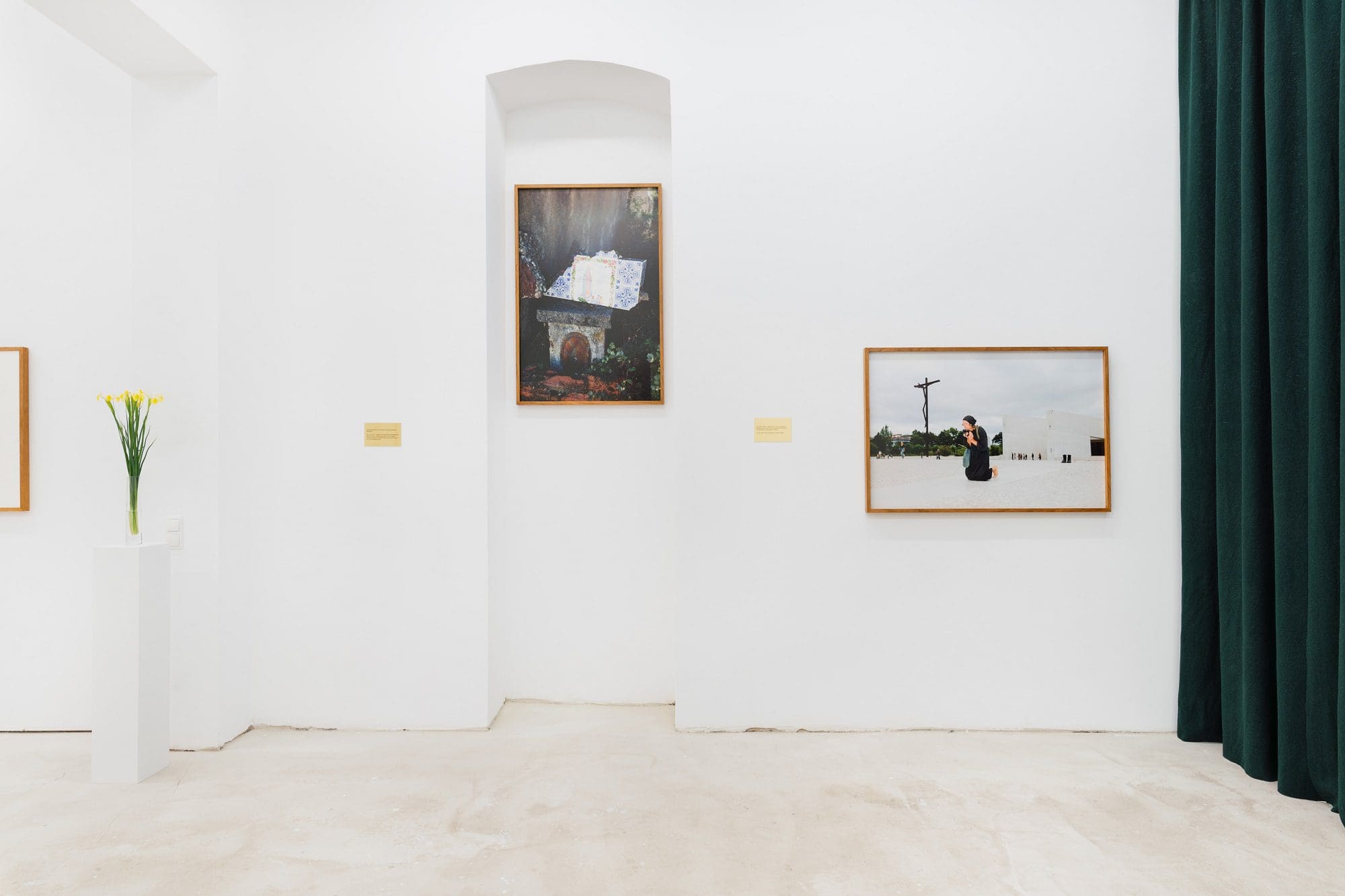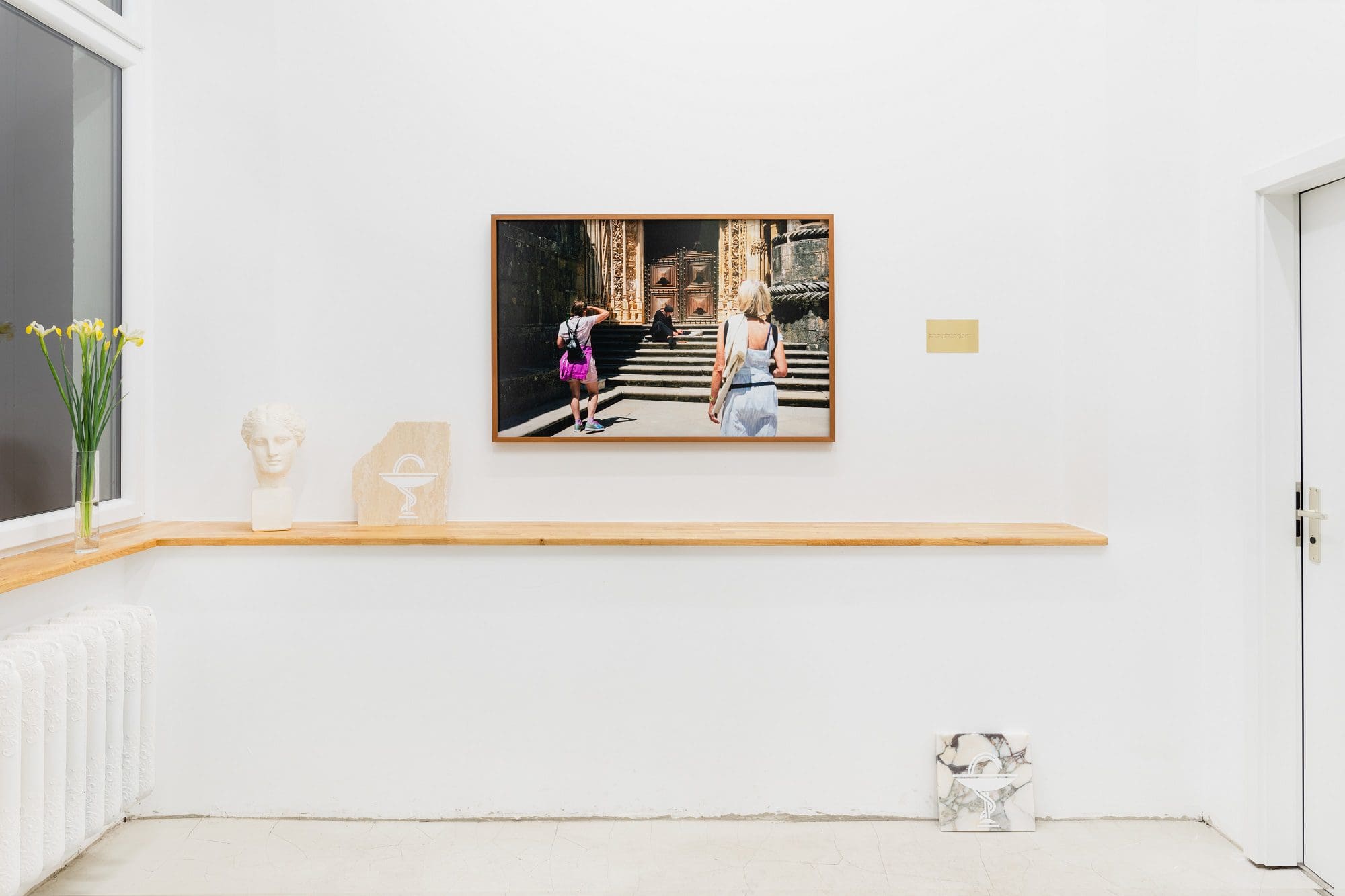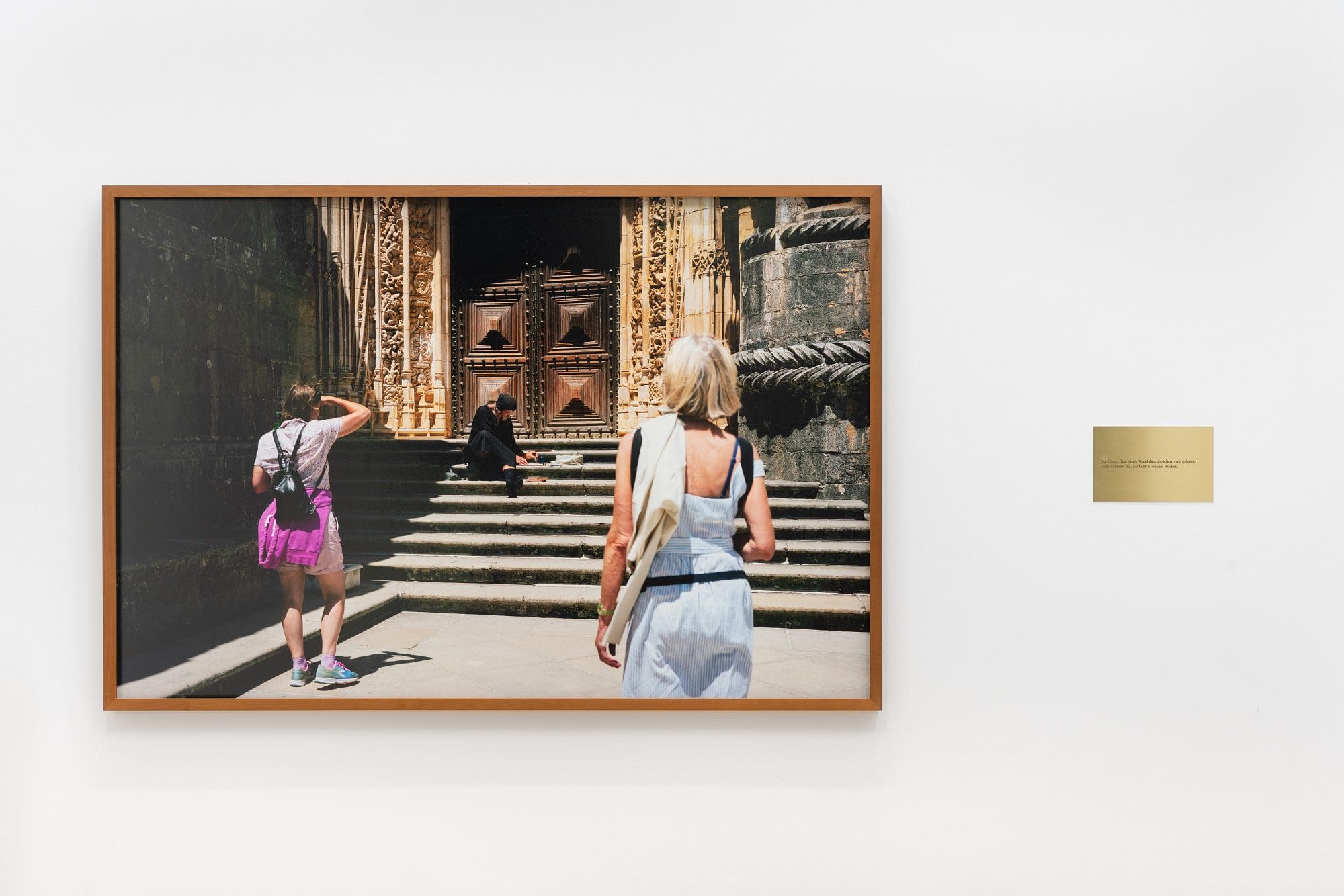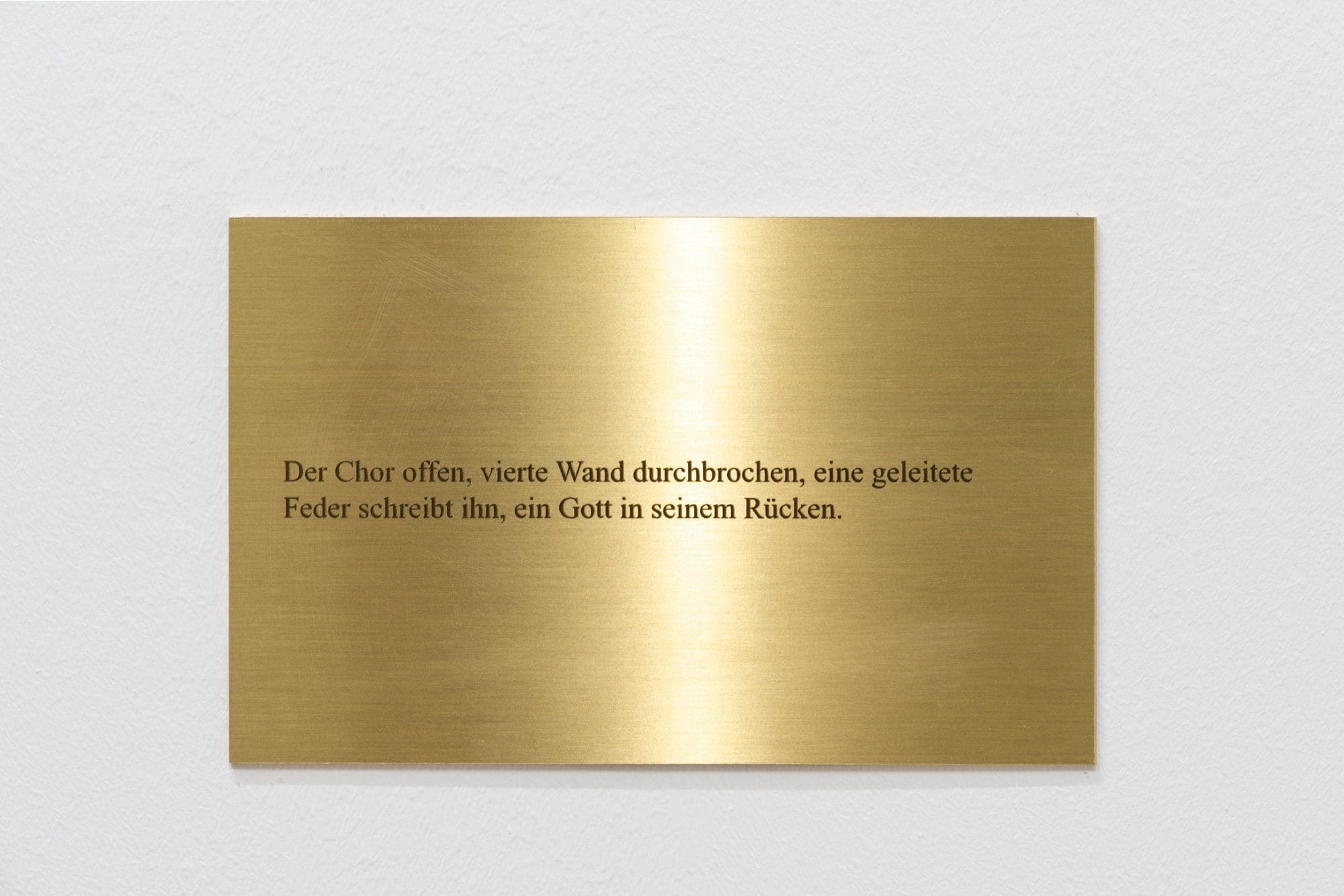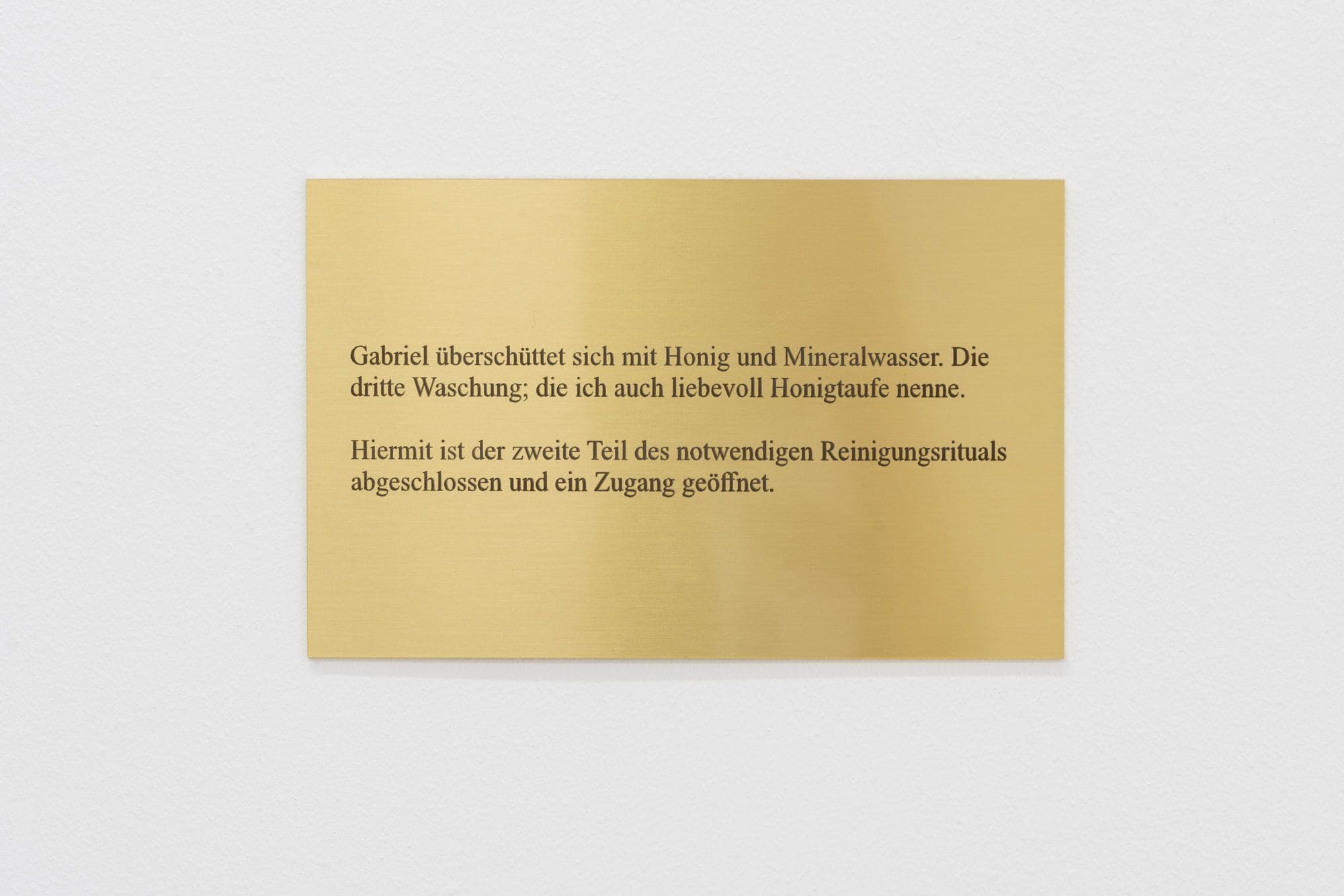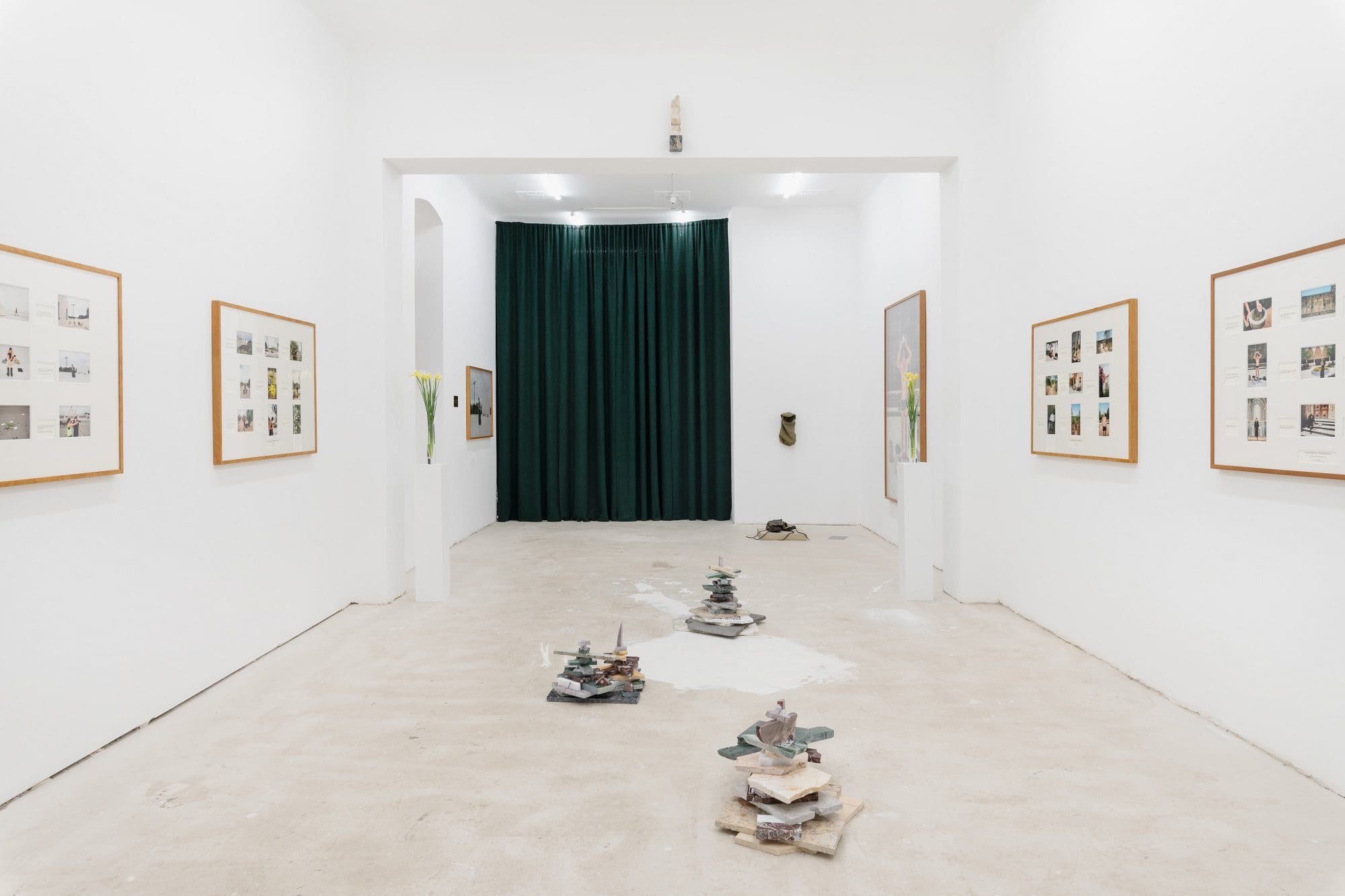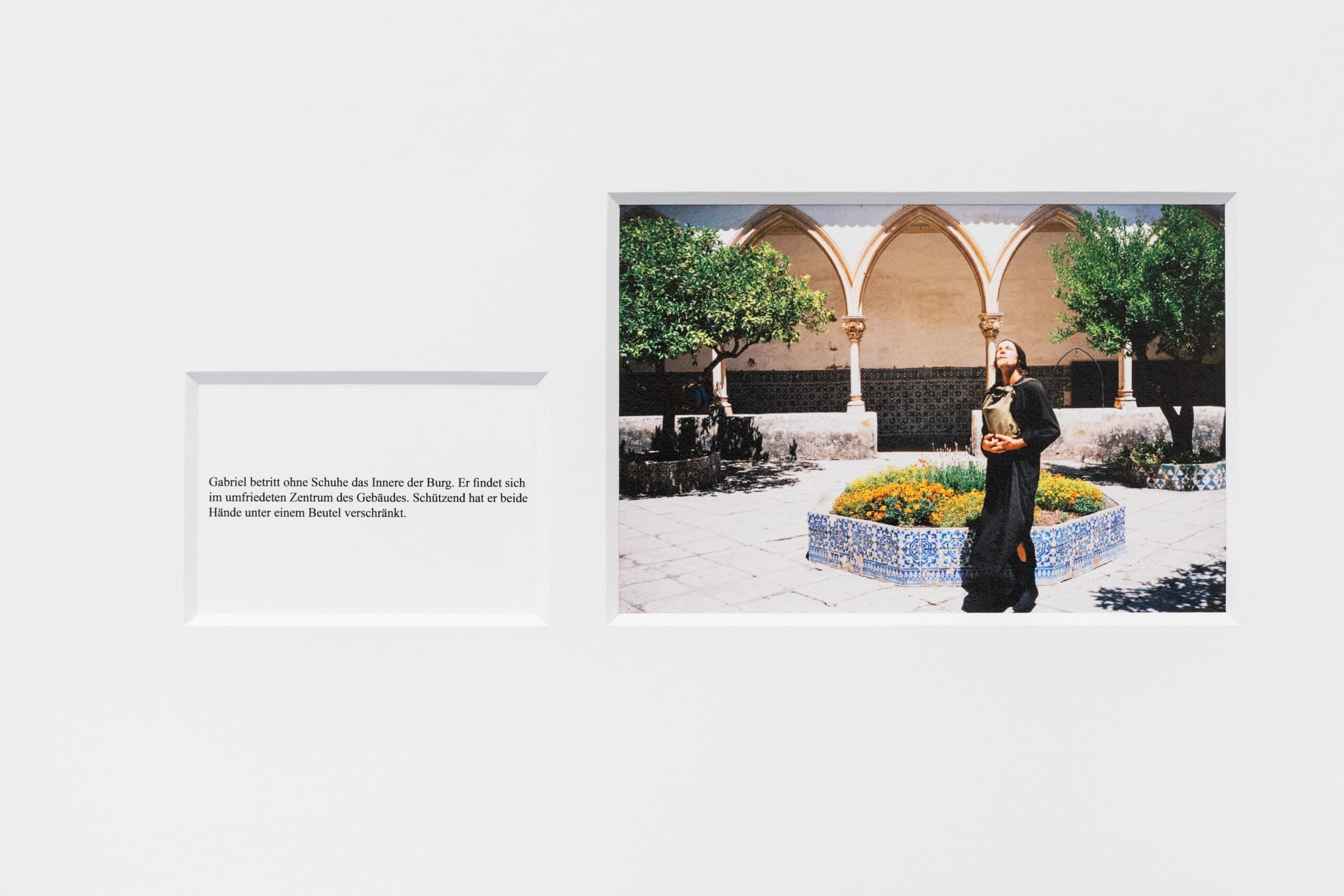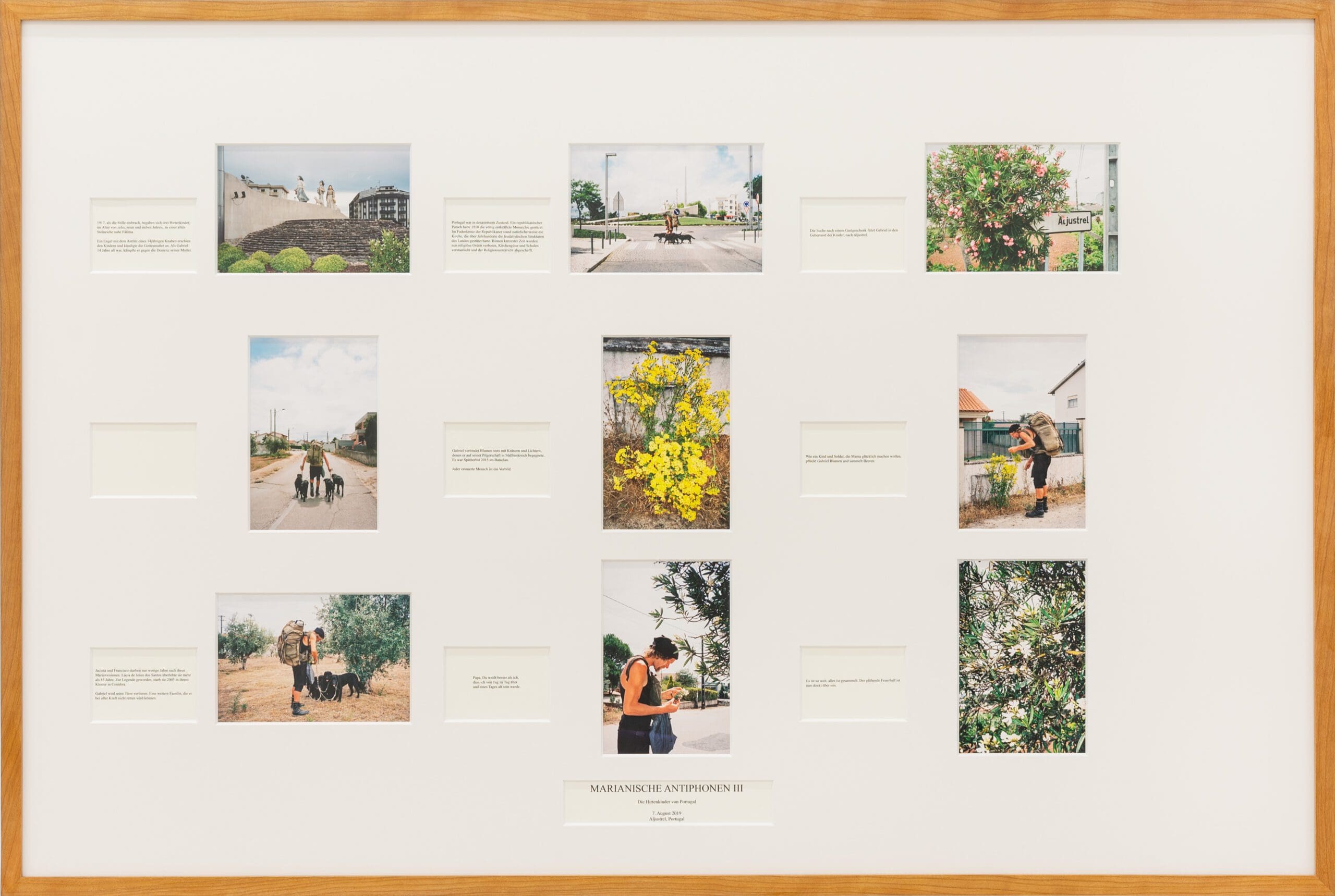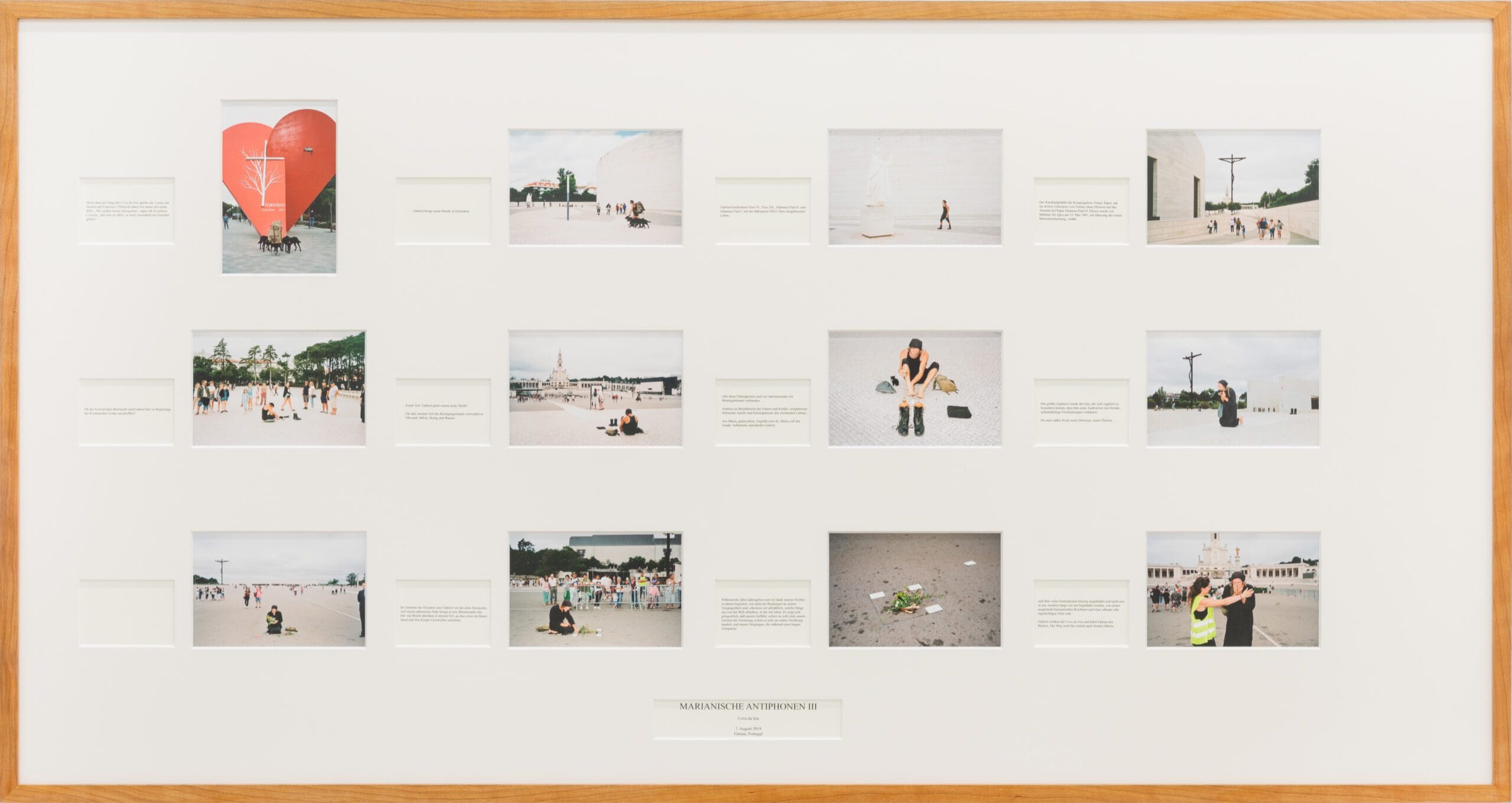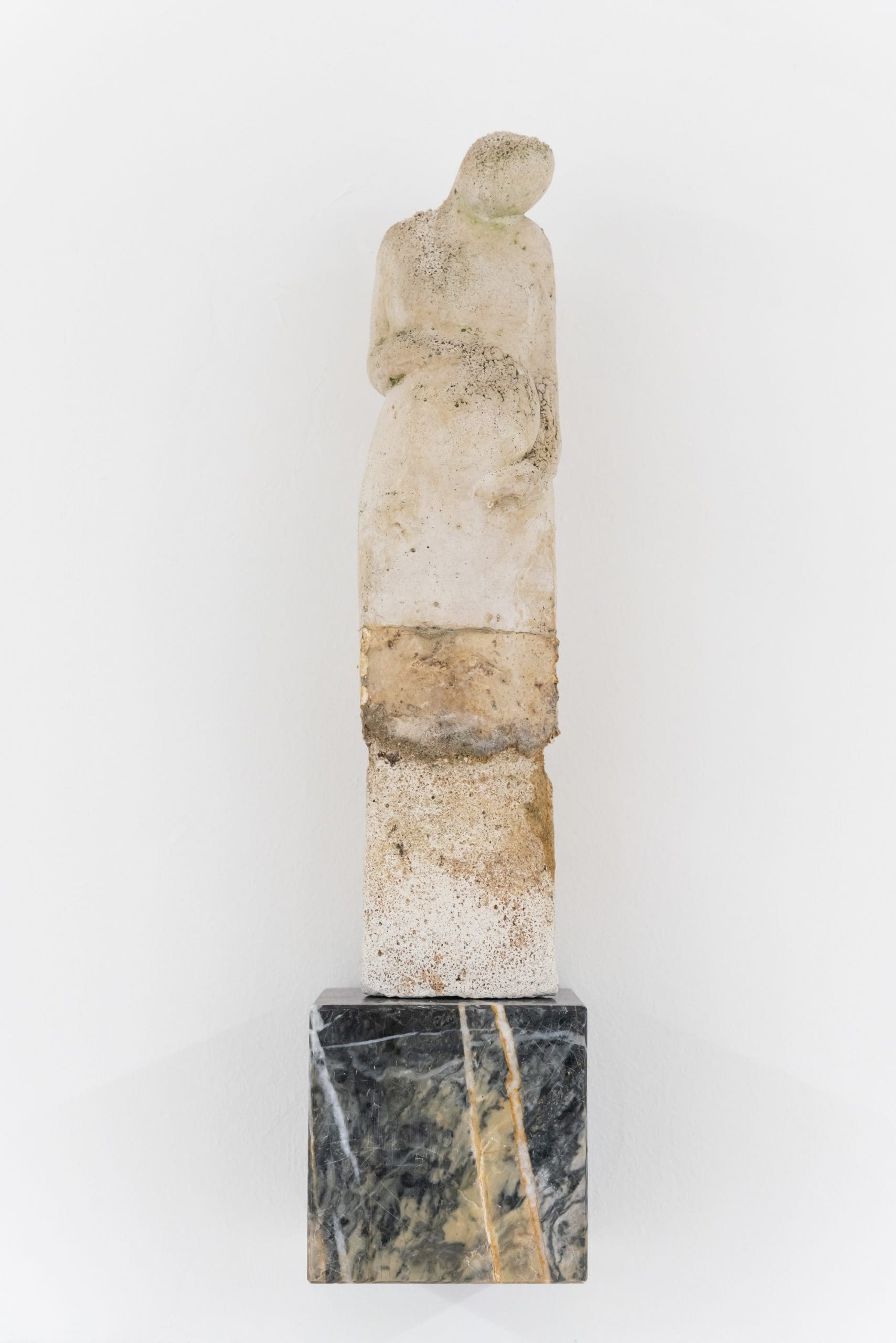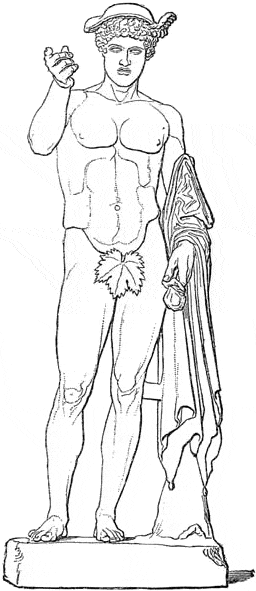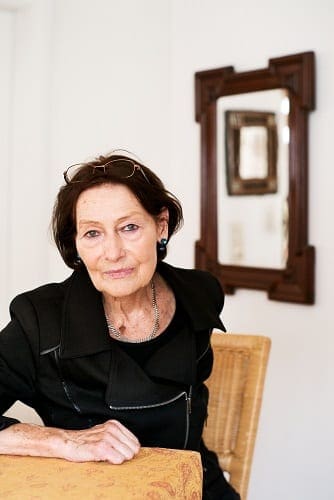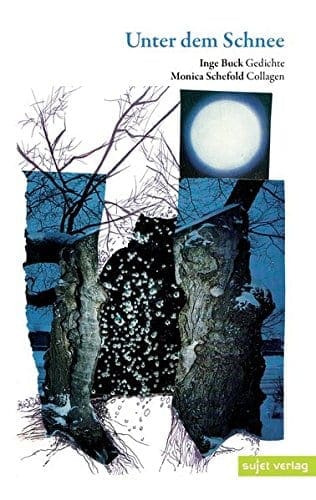M υ θ ο π ο ί η σ η V
GABRIEL
Marianische Antiphonen I – III
Gabriel & Schindele
Photographer: Stefan Hähnel
8th of April ∙ 6 PM ∙ to 7th of May 2022
NADAN
Meraner Straße 7
10825 Berlin
GABRIEL is a narrative and cosmos created by performance artist Edwin W. Moes and art historian JMH Schindele. Since 2019 they have been operating as the artist duo Gabriel & Schindele. The main character of this tale is Gabriel, who is embodied by Moes.
Gabriel, a wanderer, lives on the street - at first glance indistinguishable from other street dwellers living a life exposed to the world. But Gabriel is in fact a pilgrim, who first set out on his journey on the 15th of September 2015, so beginning his long-term performance WEG [The Way/The Walk/The Path]. The journey, commencing some 2372 days ago and continuing to this day, takes Gabriel on the great pilgrimage routes of Santiago de Compostela, Rome and Jerusalem, travelling with only a tent, everything on his body, and four large black dogs for company. "Pilgrimage always feels like witnessing and my trace, laid like the ephemeral breath of a string on this map, is just that: testimony and memory."
At the heart of the exhibition Marianischen Antiphonen I - III [Marian Antiphones] is a performance cycle that took place in and around the Marian pilgrimage site of Fátima in Portugal from the 5th of August to the 7th of August 2019. This was captured by photographer Stefan Hähnel. The photographs of the action, which like all of Gabriel's performances took place without announcement and in public spaces, are presented in the exhibition alongside poetic texts, fragments and conceptual works.
Gabriel & Schindele understand a place like Fátima as an already conceptually charged space of possibility where narratives and the genius loci of the place are mobilised through ritual performances. Gabriel & Schindele thus explore the notion that through the performance of rituals “something from the past is retrieved, revived and won for the present.” In their work, they thus intertwine different temporal levels, biographies, history and fictions, as well as Christian, Greek and other mythological sign worlds.
The idea of a permanent oscillation between poetry and truth [Dichtung & Wahrheit], which also repeatedly touches on questions of authorship, is a characteristic theme within their work. Gabriel & Schindele see this theme as embedded in and a contribution to a long tradition of European cultural memory. In this the artists take their cue from cultural studies, ethnology, the sociology of religion and feminist theology as well as from thinkers and philosophers such as the early German Romantics or the Indian psychoanalyst Sudhir Kakar. Quotations from Teresa de Ávila, Friedrich Hölderlin, Angelos Sikelianos, Giorgos Seferis, Emmanuel Levinas and Friedrich von Hardenberg (Novalis) have thus found their way directly into the works in this exhibition.
Fátima and the Marianische Antiphonen
Fátima in central Portugal. Here, at an old holm oak, the Mother Goddess Mary is said to have appeared to three shepherd children a total of six times over the summer of 1917. She entrusted them with a prophecy that went down in history as the Three Mysteries of Fátima. At that time, reports of the apparition of Mary spread at lightning speed and led to a so-called 'miracle of the sun' on 13 October 1917, where Mary appeared for the last time to a gathering of an estimated 40,000 people.
From these sources and this rich mythology of the place, the Marianische Antiphonen were born. Across three days in August 2019, Gabriel went in search of the female deity of Christianity and encountered the embodiment of a principle as well as the descendant and sister of the ancient mother deities.
The title Marianische Antiphonen takes up chants addressed to the Mother of God (antiphons = alternating chants) in the Christian liturgy. For Marianische Antiphonen I, the artists chose the opening lines of the oldest of these canonised pieces of music, from the third century AD, Sub tuum præsidium confugimus – „Unter deinen Schutz und Schirm fliehen wir” [Beneath thy protection we seek refuge]. They refer to the motif of the ‘Virgin of Mercy’, which has inspired the artists from the outset of the development of this performance series, and which understands Mary as a symbol of unconditional loving warmth, understanding and maternal protection.
On the sequence of the Marianische Antiphonen
The Marianische Antiphonen I “Unter deinen Schutz und Schirm fliehen wir” took place in the Templar castle Convento de Cristo in Tomar. Gabriel performs a multi-part ritual cleansing. "I, being human, am dirty and before I enter the sanctuary, I must cleanse myself. This is what respect for the symbols and one's faith requires." For this ablution he uses milk, honey[1], water and oil - all liquids that have been symbolically associated with female deities for thousands of years. After this act, he enters the interior of the fortress. Here he unveils the kitten NEO, new-born life that he rescued from the trash a few days earlier, and which embodies the Kommenden Gott[2] [The Coming God]. Gabriel is subsequently ejected from this house of God by a representative of the institution and returns to the place of the purification ritual. While there he writes four letters to Mary and the shepherd, in an inner chant. With these he leaves the complex and crosses the wasteland between Tomar and Fátima in the Marianische Antiphonen II - Zwischenland.
In Marianische Antiphonen III Die Hirtenkinder von Portugal [The shepherd children of Portugal], Gabriel visits Aljustrel, the village where the children were born. There he gathers flowers and berries, which he carries to Fátima as an offering, gift and greeting. Walking the length of a promenade about 2 km long, with a row of modern hotels on the right and desolate land on the left, Gabriel progresses to the 'pilgrim arena' Cova da Iria.
The Marianische Antiphonen III Cova da Iria took place in Fátima's main shrine. After tethering his dogs securely, he walks alone to confront the institution of the Church, represented by four stone or bronze popes, with NEO, the new-born. Gabriel again undertakes a ritual ablution cleansing. "I walk around history and stories and bear witness to them. It's like a kind recovery process in which I embrace individual fragments with my arms." On his knees, carrying NEO protectively in his arms, he arrives at the place where the holm oak once stood and where Mary is said to have appeared to the children. Here he hands over his gifts and the four letters.
The exhibition is dedicated to the Greek goddess of memory MNEMOSYNE.
[1] The Swiss legal historian, antiquarian and anthropologist Johann Jakob Bachofen (1815-1887) summarized the symbolic meaning of bees and honey in the following words: "the bee [appears - JMHS] rightly as a representation of the female potency of nature. With Demeter, Artemis and Persephone she is preferably connected and here a representation of the earth substance according to its motherliness" (Bachofen; 1861; Das Mutterrecht).
[2] The 'Coming God' is a epithet of the god Dionysus that has been used since antiquity. It is instructive in this context to understand Dionysus as a male variation of female goddesses, symbolic of amongst many things fertility. How can a male god genuinely stand for fertility?
Manfred Frank (* 1945) writes in reference to Friedrich Schelling (1775–1854): “so it is not far to the presumption that the cult of Dionysus was from the beginning connected to the veneration of the great mother (…) So Dionysus and Kybele/Semele/Demeter stood, long before the Confusion of the Delphic and Athenian cultures in a direct relationship” (Frank; 1982; The Coming God. Lectures on New Mythology).
Marianische Antiphonen I
„Unter deinen Schutz und Schirm fliehen wir“
5th of August 2019
Portugal – Tomar – Convento de Cristo
























Marianische Antiphonen II
Zwischenland
6th of August 2019
Portugal – Zwischenland – from Tomar to Fátima










Marianische Antiphonen III
Die Hirtenkinder von Portugal
7th of August 2019
Portugal – Aljustrel











Marianische Antiphonen III
Cova da Iria
7th of August 2019
Portugal – Fátima – Cova da Iria























Note on exhibition cycle Mythopoesis
The Mυθοποίηση – Mythopoesis (translated roughly as 'mythmaking') Cycle began in February 2020 at the Bublitz Thesaurós with the exhibition Tempel auf Zeit. GABRIEL Marianischen Antiphonen I - III is the fifth part of the series.
Fundamental to Mythopoesis is the assumption that human notions of 'being-in-the-world' and 'looking-into-the-world' are significantly - if not entirely - (pre-)shaped by stories, narratives and mythologies. These narrative lenses consciously or unconsciously determine our relationship to ourselves, our communities, the wider culture, etc. In this way, Mythopoesis speaks to Benedict Anderson’s concept of ‘imagined communities’, positing the idea that our subjective relationships with the world are always-already in some way determined by forms and formats of media and are filtered through interpretation.
The research interest of this cycle aims to give space to different forms and varieties of narration and contemporary mythmaking, tracing them in works by (visual) artists and other poets.
Participants and protagonists
Edwin William Moes was born in Rotterdam in 1971. In his childhood he experienced illness, death and abandonment. He trained as a dancer (1989-1993) at the TED [Theatre Expressional Dance] in Tilburg in the Netherlands. However, he was unable to pursue this profession due to a fracture of the femur. He then spent time in Vienna, Berlin and, most significantly, the historic half-timbered town of Melsungen on the river Fulda. There he developed the architectural Gesamtkunstwerk Bound (2007-2014), which is now largely destroyed. In 2007, he developed the figure, Gabriel. Since 2015 he has been on pilgrimage in the long-term performance WEG.
Julian Malte Hatem Schindele was born in Bremen in 1984. He studied business administration, philosophy, art history and Egyptology at the University of Potsdam, the Free University of Berlin and the Humboldt University of Berlin. In 2011 he founded the curatorial office Bublitz, which has become known as an organisation that works directly at the interface of artistic production, curatorial narrative and cultural history. With the founding of the artist duo Gabriel & Schindele in 2019, Schindele also works as a visual artist.
Stefan Hähnel was born in Frankenberg in 1984. He trained as a media designer in Dresden and studied printing and media technology at the Ostkreuz School of Photography in Berlin. In addition to reportages from different regions of the world, his work focuses on collaborating with visual artists, theatre makers and other cultural professionals. His work also celebrates his passion for extreme endurance sports and their documentation.
An exhibition by Bublitz in cooperation with NADAN.


